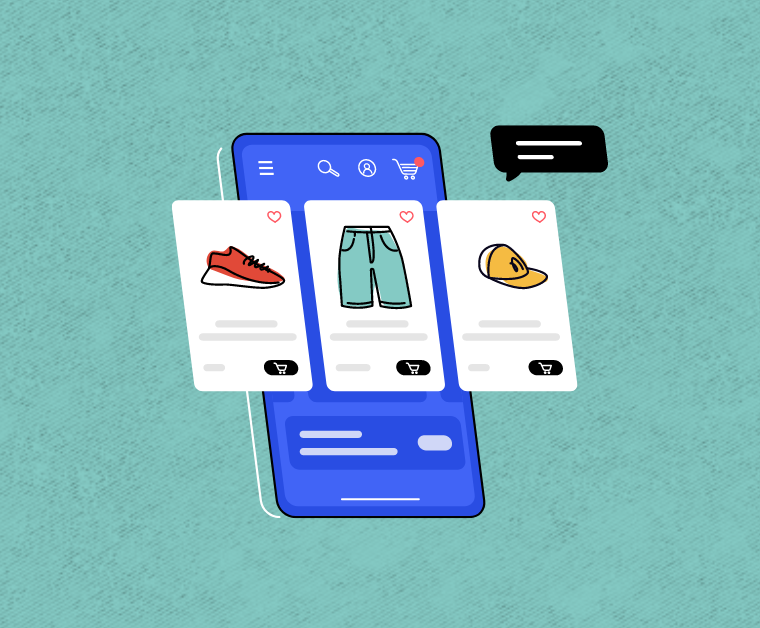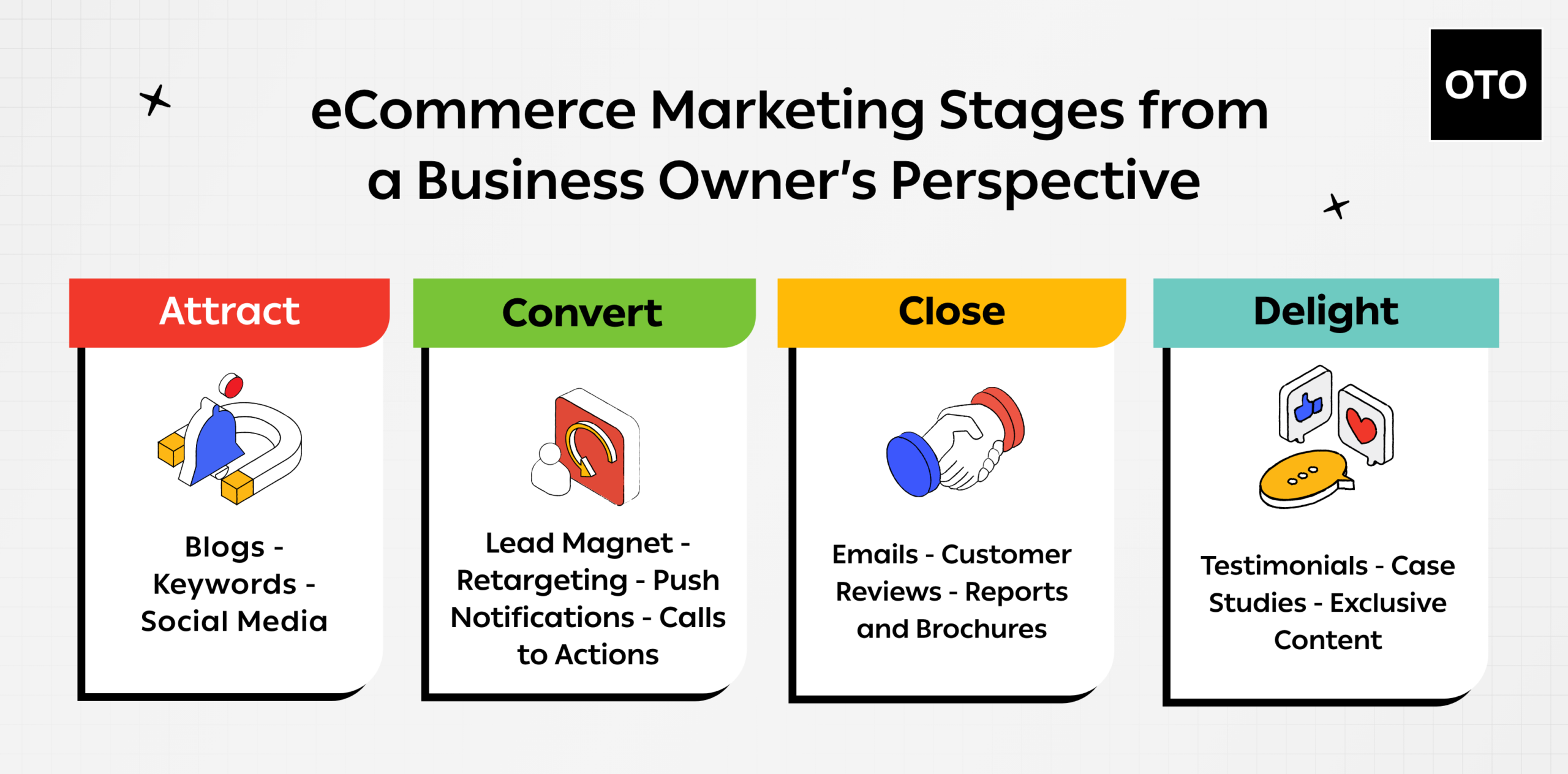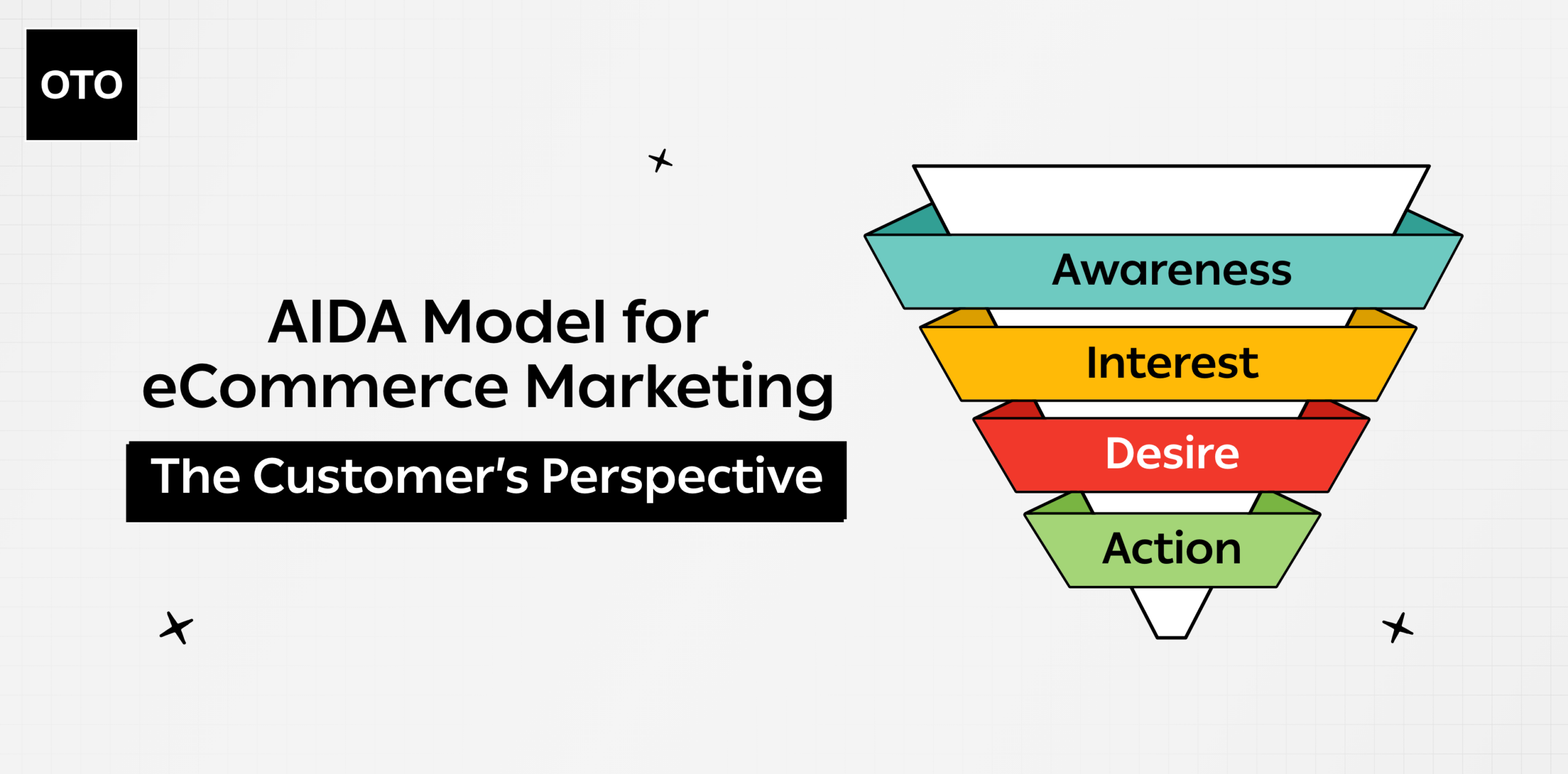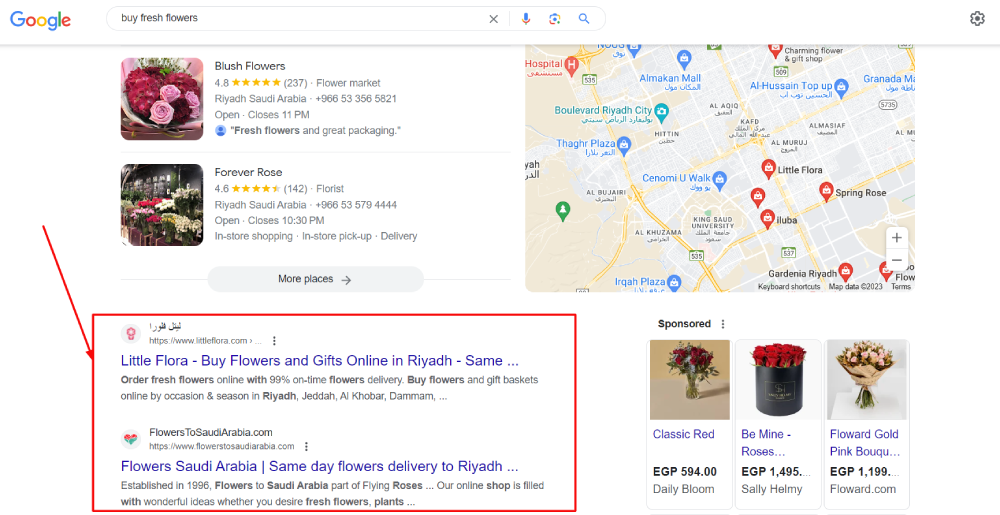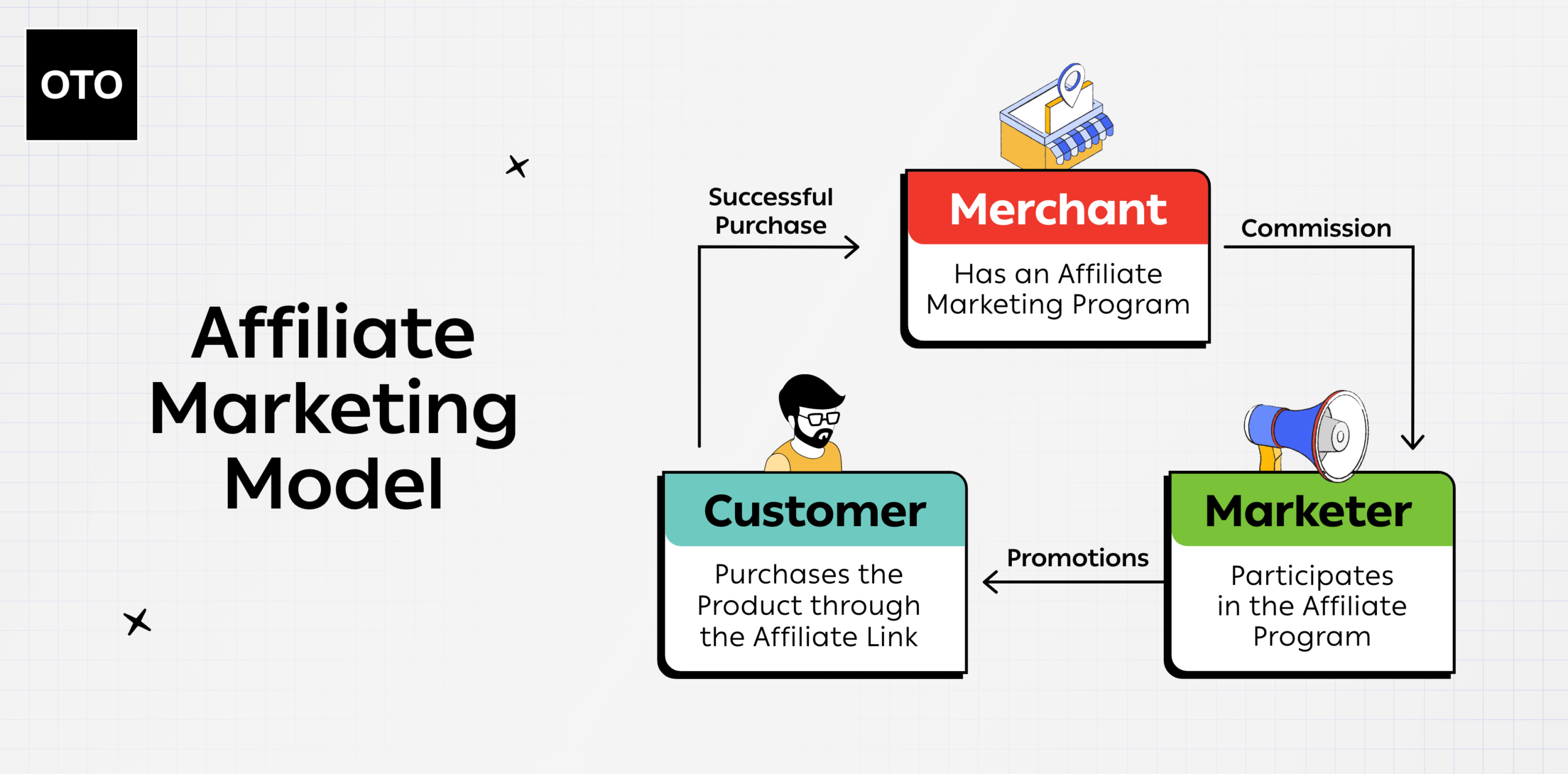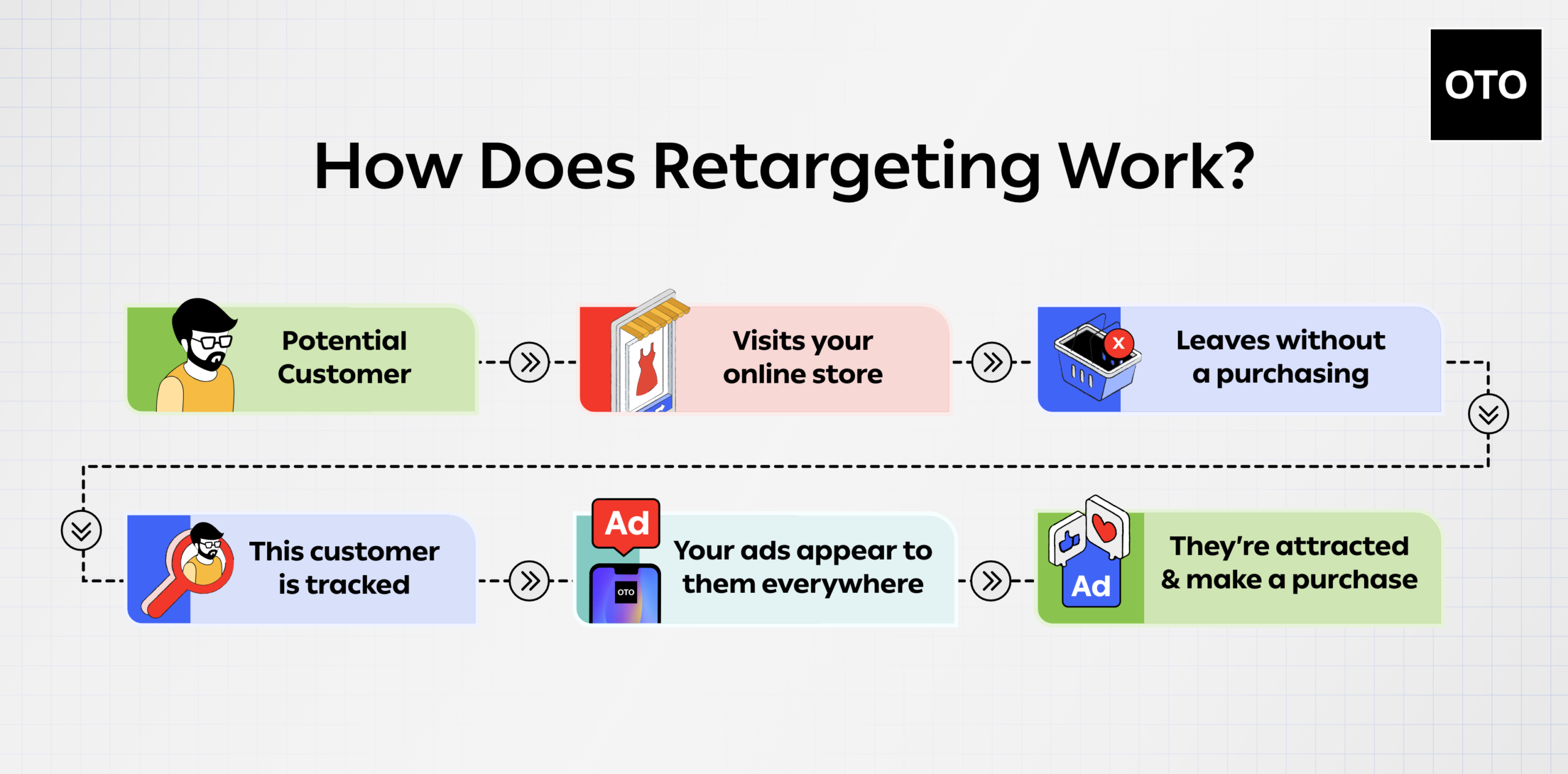Competition among e-commerce stores in the Arab world is fierce due to the growth in the e-commerce sector, which has achieved unprecedented growth rates over the past five years. According to a study, the region witnessed a staggering annual growth rate of 22.38%, reaching $104.1 billion USD in 2022.
Now, the questions are,
- Where do you stand amidst this growth?
- Has your e-commerce business contributed to it?
- Can your business withstand this fierce competition?
Well, let’s discuss in this article some successful strategies to professionally promote your online store and convert your store’s visitors into actual buyers.
This way, you can multiply your sales, increase your profits, and strongly compete with, or even outperform, your competitors.
Let’s delve right in.
What is eCommerce Marketing?
eCommerce Marketing encompasses marketing practices used to increase sales, build brand awareness, and enhance customer loyalty.
To achieve this, online stores should:
- First, focus on attracting attention and directing potential customers to their online stores.
- Then, attempt to guide visitors into making a purchase or providing their personal information in exchange for marketing or informational materials.
E-commerce marketing involves several stages, starting with grabbing attention and concluding with purchase and loyalty. So, we will explore these stages from both a business and customer perspective, along with clarifying some useful marketing approaches for each stage.
First: eCommerce Marketing from a Business Perspective
The marketing process in e-commerce involves 4 key stages where all businesses aim to transform individuals from being strangers to the brand into actual customers. Then, they aim to convert these customers into brand advocates.
These four stages are:
- Attract: This involves attracting the targeted audience to the online store using various marketing methods, such as Facebook ads.
- Convert: This refers to converting the store visitors into potential customers by obtaining their information.
- Close: In this stage, the goal is to complete the transaction or close the sale by enticing potential customers to make a purchase.
- Delight: Here, efforts are focused on delighting customers in various ways to turn them into brand advocates and promoters.
Each of these stages has appropriate marketing techniques aimed at achieving the desired goal, as illustrated in the diagram below 👇
Second: eCommerce Marketing from a Customer Perspective
The American businessman Elias St. Elmo Lewis developed the “AIDA” model in 1898, and its principles remain highly relevant to the topic of eCommerce marketing today. We find that it is most suitable for explaining the marketing of your online store from a customer’s perspective.
This model summarizes the 4 stages of influence on the target audience, with the abbreviation AIDA standing for:
- Awareness: The target market must first be aware of your products or services.
- Interest: This is the stage where individuals begin to show interest in the benefits of your products or services.
- Desire: Here, interest must transition into desire, laying the necessary motivating factors for making a purchase.
- Action: In this stage, the potential customers’ desire should be strong enough to compel them to make an actual purchase.
Now that you understand the stages of influencing your customers, the important question is, “How can you successfully use these marketing models to promote your online store?” 🤔
Let’s answer this question with detailed practical steps.
Stages of Marketing an Online Store from A to Z
Given their significant similarities, we will combine the two previously mentioned models to provide you with a comprehensive picture without delving into unnecessary details.
Let’s begin.
First: The Attraction or Awareness Stage
When contemplating selling your products or services in a market, you must first build awareness of the product or service in the minds of your potential customers.
But the important question here is, “Who are your potential customers?”
There is no single product that targets everyone. You are undoubtedly aiming at a specific category or several categories, and you target a particular market or multiple markets. Therefore, you need to define all of this before starting any marketing activities for your business or online store.
Here’s our first piece of advice for you 👇
Precisely identify who your potential customers are. Gather their general information, such as age group, gender, geographic location, average income, interests, and so on.
Once you’ve done that, begin marketing through various marketing channels/tools, which can be categorized into:
- Organic Marketing Tools: These don’t require any financial payment for their use and are very suitable if you have a limited marketing budget. These tools include marketing on social media platforms, content marketing, and search engine optimization (SEO).
- Paid Marketing Tools: These include advertising, affiliate marketing, and influencer marketing.
How to Market Your Online Store Using Organic Marketing Tools
It’s important to note that unpaid marketing methods take time and effort to yield results and may require you to work on them yourself or enlist the help of a specialist to manage them.
Let’s summarize the most important three steps:
1. Build a Solid Presence on the Most Used Social Media Platforms:
Maintain a regular posting schedule, engage with your audience, and become a part of their conversations and comments. Identify which accounts or posts they engage with the most and become part of that interaction.
2. Provide Value-Oriented Content:
Offer valuable content that encourages audience interaction. Always remember that the goal of the content you provide is to give your audience more than you take from them. This means providing them with information, ideas, and benefits.
There are various forms of content you can use in this stage, such as articles, white papers, eBooks, educational videos, podcast episodes, webinars, case studies, and more.
Here are some tips:
- Create content that is closely related to your brand and tailored to your target audience’s preferences.
- Emphasize visual content, as a picture is worth a thousand words.
- Address customer needs and identify their most pressing problems, then present the benefits of your products that can solve those issues.
- Create attention-grabbing and engaging ad headlines tailored to each segment of your target audience.
3. Leverage Search Engine Optimization (SEO):
Now is the time to optimize your presence on search engines like Google to attract more visitors to your online store.
For instance, when searching for “buy fresh flowers,” you’ll find advertisements at the top of the results, but you’ll also see some e-commerce stores that have worked hard to improve their rankings to appear at the top of the list.
It is also important not to overlook the significance of the most popular video platform, “YouTube,” as one of the most widely used search engines. Its user base has exceeded 9 million users in the United Arab Emirates, 29 million users in Saudi Arabia, and 46 million users in Egypt, according to Google statistics for 2022.
By following these three steps, you can effectively market your online store using unpaid marketing tools. Keep in mind that patience and consistency are crucial in this process, as it may take some time before you see significant results.
Although they take time to build, they are of utmost importance and typically continue to yield good results for your store even if you pause your investment in them for a period.
How to Market Your Online Store Using Paid Marketing Tools
If you are looking to achieve your goals quickly, attract more customers, and generate higher sales with less effort, you should consider marketing your online store using paid tools.
Paid marketing methods don’t require you to spend months building your presence on social media or improving your search engine rankings. Results will come quickly, but the paid advertising channels will stop delivering returns and sales growth the moment you stop investing money.
In any case, let’s explore the top three paid marketing methods that are suitable for e-commerce in 2023:
The Top 3 Ways to Market Your Online Store with Paid Tools
1. Start Advertising on a Major Social Media Platform
Social media platforms have massive user bases, which undoubtedly include some of your potential customers. Therefore, the simplest and most popular paid marketing method is to launch advertising campaigns for your store on a major social media platform, such as Facebook, Instagram, Google, YouTube, Snapchat, Twitter, LinkedIn, Pinterest, and others.
.2. Leverage Influencers
Influencers are individuals who have a relatively large number of followers on their social media accounts and have the ability to genuinely influence the purchasing decisions or preferences of a significant number of their followers.
Hence, influencer marketing is the process of partnering with influencers to promote your products or services to their current audience.
But be cautious ⚠️
Before enlisting the help of an influencer, don’t be deceived by the number of followers on their account or the number of subscribers on their channel.
You should analyze the influencer’s account/channel to understand their audience’s engagement rate. This is the most important indicator that reflects the likelihood of the success of your collaboration.
This point leads us to the most crucial advice, which is that it’s not necessary to partner with influencers who have a massive number of followers. Starting a collaboration with someone with an average number of followers can be very successful as an initial launch.
3. Build an Affiliate Marketing Program
Affiliate marketing is simply enlisting regular individuals to promote your products and services in exchange for a small commission for each successful sale or subscription.
This marketing process involves an individual (the affiliate marketer) signing up for your affiliate program to receive a referral link or affiliate link that is easy to track. This link is used in all marketing activities performed by the affiliate marketer. Once a potential customer clicks on this link and completes a purchase from the affiliate marketer, they receive a commission for that customer.
Various marketing tools are used to spread this link and promote it, whether in articles, videos, social media platforms, or elsewhere.
You can also pay to acquire new customers through “Referral Programs,” which help brands utilize their own customers as promoters of products and services by persuading friends and acquaintances to purchase something.
They are encouraged to do this by offering specially prepared discounts to motivate customers to refer people in their network to your product or service.
For example, you can provide a $20 coupon to your customers if they get a friend to make a purchase through them.
Referral programs have the ability to achieve significant brand growth if, for instance, most customers refer just a couple of friends.
Second: The Conversion or Interest Stage
Once you succeed in increasing the number of visits to your online store using the e-commerce marketing methods mentioned earlier, you will now need to convert these visitors into actual customers.
Don’t just focus on capturing the customers’ attention; also, consider the importance of piquing their interest using the following methods:
- Carefully listen to their problems.
- Identify the reasons causing these problems.
- Substantiate your claims that your product will solve these problems with facts, not just assumptions.
- Use information and evidence-based persuasion techniques.
- Engage them actively in something related to your brand (e.g., launching a contest for the best product photo or asking them questions to increase their interaction).
Also, keep in mind that not everyone who visits your online store will make a purchase the first time. However, having them as visitors increases the likelihood that they will become actual customers. So, gather their information to continue marketing to them in the future.
But how?
How do you turn visitors to your online store into buyers?
There are four main strategies you can follow, and they are:
- Lead Magnet Marketing
- Retargeting
- Push Notifications
- Calls-To-Action
Let’s discuss each of these strategies in more detail.
1. Collect Customer Data with Lead Magnets
Email addresses are among the most crucial data you need to collect from your potential customers. This is because you’ll need it in the future to send your marketing messages through email, which is a highly effective marketing channel.
Email marketing often achieves a very high return on investment (ROI) compared to other marketing tools.
The question is, how will you get their email addresses or contact information?
You will undoubtedly need a “Lead Magnet” or something enticing that encourages website visitors to subscribe to your email list.
For example, the well-known online store “SHEIN” offers website visitors extra discounts on their orders if they register an account in the store using their email address.
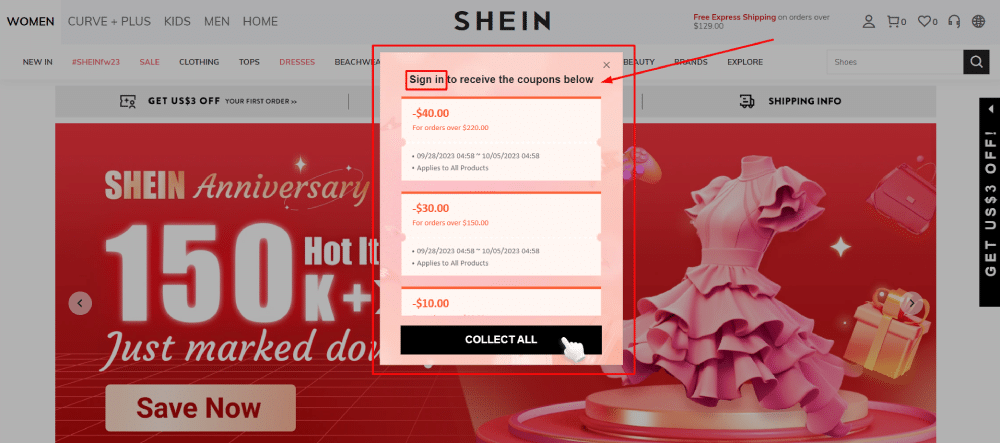
And despite the discount possibly being the most convincing offer, you can also provide exclusive content in exchange for obtaining visitors’ email addresses. For instance, you can promote:
- eBooks full of tips and practical steps.
- Reports about an industry to explore current trends.
- Survey results or research conducted on a specific audience.
- Training courses delivered progressively through email.
2. Retargeting
Have you ever browsed an online store, decided to buy a product, added it to your wish list or shopping cart, and then changed your mind at the last moment, only to find advertisements for the same product following you on social media and some of the websites you visit?!!
This is precisely what retargeting is…
It’s one of the highly successful eCommerce marketing techniques that push customers to repeatedly encounter a product, and if you ever feel like a brand is following you online, displaying ads everywhere you go, know that you’re being retargeted.
How does that happen?
Without delving into the complex technical details, it can be said that retargeting is based on “cookies,” which use a simple JavaScript code to anonymously track your customers and follow their activities across the web.
While developing and programming your online store, you’ll include a small code called a “Tracking Pixel.” (Most e-commerce platforms like Zid, Salla, ExpandCart, Shopify, WooCommerce, BigCommerce, etc. offer the ability to add this pixel without any complex coding steps.)
This code or pixel is unnoticeable to your online store visitors, and it won’t affect its performance.
Every time a new customer visits your store, this pixel records this activity with cookies. Then, when your tracked visitors browse certain websites or social media platforms, the cookie allows the retargeting provider to know when to display your ads, ensuring that your ads are shown only to people who have previously visited your online store.
3. Push Notifications
Push notifications are small messages that appear on mobile devices and web browsers, containing marketing messages aimed at encouraging customers to take specific actions, whether it’s buying a product, subscribing to a service, attending an event, or more.



